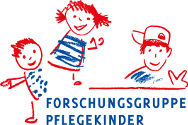Paulo Delgado, InED, Escola Superior de Educação do Porto, CIEC - Universidade do Minho, Portugal / João M. S. Carvalho, CICS.NOVA, Instituto Universitário da Maia, Portugal / Vânia S. Pinto, InED, REES Centre, Department of Education, University of Oxford, UK
| Presentation as PDF Download |
Abstract:
|
|
The placement of a child in foster care implies the maintenance of an indirect or direct relationship with the biological family. This evidence imposes a complex and difficult challenge to whom is fostering, because is faced with the behaviour and values from the biological family that are often far from their own. How to deal with differences in behaviour and beliefs, how to manage them, and to what extent one accepts them, are central questions in the foster care process. This study is part of an ongoing and more extensive research with 221 children that aims to analyse the results of the contact between the foster child and the biological family and the causes of it absence or termination. This paper has a focus on a methodological triangulation, presenting the content analysis of interviews with a group of 10 foster cases, including foster families, birth families, and social workers, crossing the perspective of all protagonists. Tha main results show that foster families and social workers have in their relationship a positive mutual perception. The birth families praise the carers work but are very critical regarding the performance of social workers, creating a gap between the key players in foster care. It can be concluded that is necessary to develop inclusive relational processes, attempting to improve the families’ relationship, in order to close up birth families and their children, and make them participate in decision-making. In one hand, training on contact and cultural diversity can strengthen communication and relationships. In the other hand, changing the visits’ site to a place closest to the birth family home, or increasing the support for travels, might contribute to reducing economic difficulties in carrying out visits Keywords: Foster care, Diversity, Contact |
